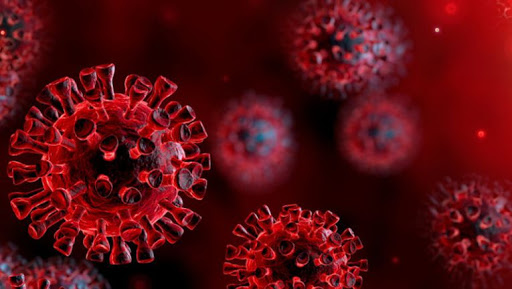BREAKING! New Coronavirus Research Shows That The SARS-CoV-2 Coronavirus Has A Fourth Route Of Attacking Human Host Cells Making It A Real Super Virus
Source: Coronavirus Research Mar 15, 2020 5 years, 3 weeks, 5 days, 7 hours, 27 minutes ago
Coronavirus Research: Another new, yet to be peer-reviewed study by Chinese researchers from the National Translational Science Center for Molecular Medicine & Department of Cell Biology, Fourth Military Medical University, Xi'an, China lead Professor Dr Ke Wang, a leading virologist and genomic researcher and a team of 29 other researchers from 4 other medical and research institutions have discovered a fourth route by which the new SARS-CoV-2 coronavirus that causes the Covid-19 disease can attach and bind itself the human host cells. (
https://www.biorxiv.org/content/10.1101/2020.03.14.988345v1.full.pdf+html)

Initial studies have showed that the SARs-CoV-2 attacks human host cells through the ACE-2 receptors, then furin targets and lately GRP78 receptors. (
https://www.thailandmedical.news/news/breaking-latestcoronavirus-research-reveals-that-the-virus-has-mutated-gene-similar-to-hiv-and-is-1,000-times-more-potent-) and (
https://www.thailandmedical.news/news/breaking-preprint-research-shows-that-sars-cov-2-has-third-binding-mode,-making-it-a-truly-potent-coronavirus-that-is-in-a-league-of-its-own)
The latest study shows that SARS-CoV-2can invade human host cells via a novel route of CD147-spike protein (SP). SP bound to CD147, a receptor on the host cells, thereby mediating the viral invasion.
Past studies have shown that CoVs are non-segmented positive sense RNA viruses, which primarily cause enzootic infections typically in birds and mammals and have demonstrated strong lethality in humans.
These coronaviruses are known to have four structural proteins, including E, M, N and S protein. The primary determinant of CoVs tropism is the S protein, which binds to the membrane receptor on the host cells, mediating the viral and cellular membrane fusion.
Angiotensin-converting enzyme 2 (ACE2), a homologue of ACE, is one of the important receptors on the cell membrane of the host cells. The interaction of SP and ACE2 contributes to the SARS-CoV invasion for human host cells.
Interestingly, the structure of SARS-CoV-2 SP is highly similar to that of SARS-CoV SP, and SARS-CoV-2 SP binds to ACE2 with a higher affinity than SARS-CoV SP, indicative of a stronger ability of SAR-CoV-2 to invade host cell.
In addition to ACE2, other receptors for SP binding on the host cell membrane includes furin and also GRP78 receptors.
CD147, also known as Basigin or EMMPRIN, is a transmembrane glycoprotein that belongs to the immunoglobulin superfamily, which is involved in tumor development, plasmodium invasion and virus infection.
Past researches show that CD147 plays a functional role in facilitating SARS-CoV invasion for host cells, and CD147-antagonistic peptide-9 has a high binding rate to HEK293 cells and an inhibitory effect on SARS-CoV. These researches affirm the importa
nce of CD147 in virus invasion for host cells.
As a result of the similar characteristics of SARS-CoV and SARS-CoV-2, the researchers decided to conduct the new study to investigate the possible function of CD147 in invasion for host cells by SARS-CoV-2.
Their study confirmed that the SARS-CoV-2 invaded host cells via a novel route of CD147-SP.
The study also showed that Meplazumab, a humanized anti-CD147 antibody, could competitively inhibit the binding of SP and CD147 and prevent the viruses from invading host cells, which provides a potential target for developing antiviral cures or protocols.
To date there are still no effective drugs or treatment for the Covid-19 disease though many experimental drugs are being tested and tried.
The implications of the new study finding are numerous in terms for vaccine and drug development and also in terms of what the coronavirus can do to the body even in ‘recovered patients; who have dormant or low viral loads, over a period of time.
However, certain other researchers are calling for further research to ascertain if this additional route of attack on human host cells is a new phenomenon that could have arisen as a result of the SARS-CoV-2 evolving or even mutating as the research was only conducted recently based on samples taken for recent patients.
For more on the
latest coronavirus research, keep logging on to:
Thailand Medical News.
